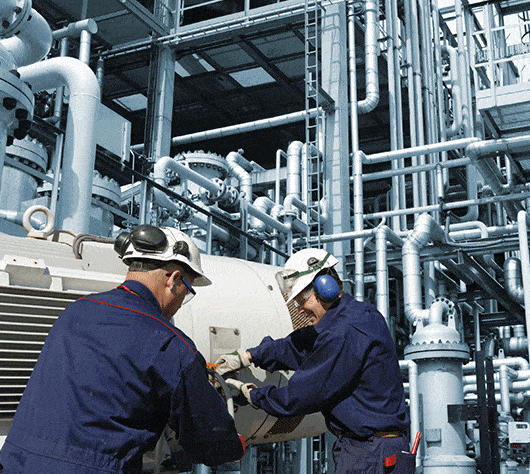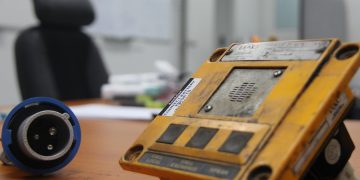Our Roar Solutions Statements
Our Roar Solutions Statements
Blog Article
Roar Solutions Can Be Fun For Anyone
Table of ContentsGet This Report about Roar SolutionsThe Of Roar SolutionsThe Facts About Roar Solutions Revealed
In order to safeguard installments from a potential explosion an approach of analysing and categorizing a potentially harmful location is required. The purpose of this is to make sure the right selection and setup of equipment to inevitably stop a surge and to guarantee safety and security of life.
(https://www.bark.com/en/au/company/roar-solutions/Bz3O1R/)
No tools should be mounted where the surface area temperature of the devices is higher than the ignition temperature level of the offered danger. Below are some usual dirt unsafe and their minimal ignition temperature level. Coal Dirt 380C 225C Polythene 420C (thaws) Methyl Cellulose 420C 320C Starch 460C 435C Flour 490C 340C Sugar 490C 460C Grain Dirt 510C 300C Phenolic Material 530C > 450C Aluminium 590C > 450C PVC 700C > 450C Soot 810C 570C The probability of the threat existing in a concentration high sufficient to create an ignition will vary from area to place.
Dangerous area electric devices maybe developed for use in greater ambient temperature levels. Field Repair By Authorised Personnel: Complicated screening may not be needed however details treatments may need to be adhered to in order for the tools to preserve its third event ranking. Each piece of equipment with a dangerous ranking must be assessed independently.
Unknown Facts About Roar Solutions
The equipment register is a detailed database of tools documents that includes a minimum set of fields to determine each product's location, technical parameters, Ex-spouse classification, age, and environmental information. This info is critical for tracking and taking care of the devices successfully within dangerous locations. On the other hand, for regular or RBI tasting assessments, the grade will be a mix of Thorough and Close evaluations. The ratio of Detailed to Close evaluations will be identified by the Equipment Threat, which is analyzed based on ignition threat (the possibility of a resource of ignition versus the probability of a flammable ambience )and the unsafe location category
( Area 0, 1, or 2). This variation will certainly likewise affect the resourcing requirements for work prep work. When Whole lots are defined, you can establish sampling strategies based on the sample size of each Great deal, which describes the variety of arbitrary tools products to be evaluated. To figure out the called for sample size, 2 aspects need to be assessed: the size of the Great deal and the group of examination, which shows the degree of initiative that need to be used( decreased, typical, or boosted )to the evaluation of the Great deal. By combining the group of inspection with the Lot size, you can then develop the proper denial criteria for an example, indicating the allowed variety of faulty things discovered within that example. For more details on this process, please refer to the Power Institute Guidelines. The IEC 60079 conventional advises that the maximum interval between inspections must not exceed three years. EEHA assessments will additionally be carried out outside of RBI projects as part of scheduled upkeep and tools overhauls or repairs. These inspections can be attributed towards the RBI example sizes within the influenced Whole lots. EEHA examinations are conducted to identify mistakes in electrical devices. A heavy scoring system is essential, as a single tool might have multiple faults, view each with differing degrees of ignition danger. If the mixed score of both examinations is less than twice the mistake rating, the Whole lot is considered appropriate. If the Whole lot is still thought about unacceptable, it should undergo a full evaluation or validation, which might cause stricter inspection protocols. Accepted Whole lot: The sources of any type of faults are recognized. If a common failing setting is found, added equipment might need maintenance. Faults are classified by seriousness( Safety, Honesty, Home cleaning ), making sure that immediate concerns are evaluated and resolved without delay to alleviate any kind of effect on safety and security or operations. The EEHA database ought to track and videotape the lifecycle of mistakes in addition to the restorative actions taken. Executing a durable Risk-Based Assessment( RBI )method is critical for ensuring compliance and security in handling Electrical Tools in Hazardous Areas( EEHA) (eeha certificate). Automated Fault Rating and Lifecycle Monitoring: Effortlessly take care of mistakes and track their lifecycle to enhance examination accuracy. The intro of this support for risk-based examination even more reinforces Inspectivity's setting as a best-in-class remedy for regulative conformity, as well as for any type of asset-centric inspection usage situation. If you want discovering more, we welcome you to ask for a presentation and uncover exactly how our remedy can transform your EEHA administration procedures.
The 10-Minute Rule for Roar Solutions

In regards to explosive risk, a dangerous area is a setting in which an explosive atmosphere exists (or might be expected to be existing) in quantities that call for unique safety measures for the building, installation and usage of equipment. electrical refresher course. In this post we check out the challenges encountered in the workplace, the threat control steps, and the required expertises to function safely
It issues of modern life that we make, keep or manage a variety of gases or fluids that are deemed combustible, and an array of dusts that are deemed flammable. These substances can, in specific problems, create explosive ambiences and these can have major and terrible effects. The majority of us recognize with the fire triangular get rid of any among the 3 elements and the fire can not occur, however what does this mean in the context of hazardous locations? When damaging this down into its simplest terms it is essentially: a mix of a particular quantity of release or leakage of a particular compound or material, blending with ambient oxygen, and the visibility of a resource of ignition.
In most circumstances, we can do little about the levels of oxygen airborne, however we can have significant influence on sources of ignition, as an example electric equipment. Unsafe areas are recorded on the harmful location category drawing and are recognized on-site by the triangular "EX-SPOUSE" indication. Here, amongst other vital information, areas are split into three types depending upon the hazard, the probability and duration that an eruptive atmosphere will certainly exist; Zone 0 or 20 is regarded one of the most hazardous and Zone 2 or 22 is deemed the least.
Report this page